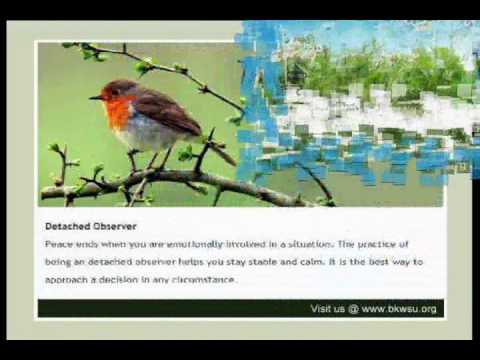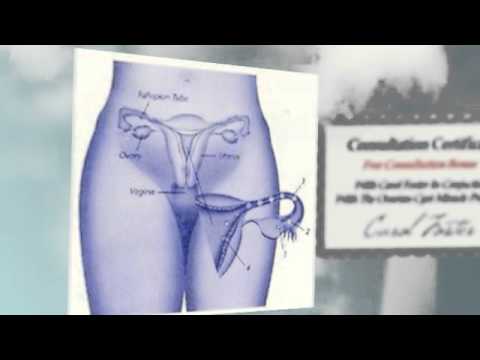Article by Mark
MEDITATION – is not quite a proper term. It became widespread in the West when the champions of eastern self-development methods (Svami Vivecananda, Shri Chin Moy, and others) just borrowed this word from the vocabulary of European theosophical community.
As homage to western mentality, it was done to ease understanding of some terminology for western people.
Although the word “meditation” may be used to describe psychophysical “medium” between sleep and being awake, it reflects the main point not to the whole extent. Besides, psychophysical states practiced by theosophists of the 19th century, Europe did not have much in common with the states practiced by Eastern Masters.
The word meditation originates from the words medium and media that mean “the middle” and “something or somebody who stands between”. In this connection we may remember the mythical sorceress Medea.
This way theosophists and mystics of Europe used to stress their ability to contact the supernatural during their trance and to be the mediators between that “weird” world and “this”.
Later, the Chinese Qigong Masters used the word meditation as a term while teaching western students.
Often meditation is understood as concentration, in other words – exertion of mind and attention.
But here, the proper state is total and complete relaxation.
***
So, what state do I mean now?
This article is written in the first person. Formerly, I had read many books on meditation to understand what on earth it was, but failed to understand anything; besides, different sources used to describe it differently.
Some said meditation was concentration. Some – as if it were “dissipated attention” when you are trying to keep an eye in both hands at the same time…
Only after some years of regular Wu Chan Zhong Qigong practicing I found the interpretation of my own and now I have some experience of the discussed psychophysical states.
Now I would like to share my experience.
There is a special state in which all of the above mentioned positive processes start. It is when invigoration and recovery starts automatically; when a huge amount of positive Qi is generated; when the Great Brain restores itself and when consciousness and ability to understand broaden… this is when Satori… Samadhi… Enlightenment… may come.
All the great spiritual systems and schools have taught only this; the State itself… Only this state is really important, everything else is just vanity…
The problem is that such things are impossible to be expressed with the words, they can be grasped only while in a deep inner practice of the State itself.
How can you explain to the blind what a sunset is? You can only suggest that he practice special exercises and wait until he regains his sight and sees the sunset.
When special brain zones open, then these particular states come and bring particular sensations, understanding, comprehension; when attachments of the tensed mind vanish and you find yourself here and now in the field of the heightened awareness not overshadowed by any relative interpretations that have become “real” for people only due to their habit and some events of evolution; when your clear vision displays the Genuine Reality — it is impossible to explain to someone who has never experienced these states and have his Brain Zones sleeping… Alas!
Take for example my student and myself… we get stimulation through these or those sensory organs; each stimulation is perceived and understood by both of us provided that we both have common organs of sense and some common experience. This is why we can share this experience, i.e. words, opinions, delight we both felt… we may share impressions hoping for understanding; although even in this case, people sometimes are not ready to understand each other, are they?
But the stimulation of organs which none of us possess… there is no way to express it… If your student has never had fingers on his hands and he wants to know what it feels like to caress a woman’s nipples… When he grows fingers and when he is bestowed by nipples… then let him touch – he will understand the sensation…
Here is another example: everybody knows what Love is, but nobody succeeded in its definition.
Doesn’t it seem to you, that whatever we have tried to say about Love seems dim and incomplete… There are so many things devoted to love… there are poignant, poetic, artistic, philosophic or even medical quotations, proverbs and sayings, compositions and thesises, rhymes and poems, and even novels… But none has been able to give a definition completely reflecting the subject.
That is why definitions are not worth taking as gospel… Even the texts of Holy Scripture are only conditional models.
The truth cannot be depicted by words, it can be only felt and experienced… as love.
Here is the main difference between priests and masters-practitioners: Priests, whatever confession they belong to, if, having never been in love, when asked about Love; will describe the subject, trying to give you more or less apt, live and wise definition based on the feelings of their prophets and teachers who used to feel Love…
Masters will act differently. They won’t be telling us about Love… what’s the use of telling about Love to someone who has never felt this… Whatever you say is not Love… What’s the use in any definition for the one who is only looking for Love?.. A tale about bread won’t appease hunger! In comparison to the priest, the Master will somehow create the situation where you fall in love yourself… It is the mission of Master not to tell us about the truth, but to give it to us… No tales and stories would never explain why the hell you, a ninth-grade schoolboy, have been wondering near a girl’s porch till five in the morning in December wearing light shoes!.. Even you do not understand it yourself already… This is like Satori.
What is this State about which I am trying to tell you about, when I have already written that it cannot be described?
OK, I will describe in detail, stage by stage, how it goes with me. But, please, remember, it will be a poor and incomplete description, and the understanding you may get from the reading will not completely correspond to the State itself.
***
When I am practicing this or that exercise in order to get the State (as an instrument for the further “work”) it starts with the “stage” of relaxation.
All the “stages” are, of course, only some generally agreed sections, phases, milestones. These milestones are needed for the only purpose, – to understand processes starting in you. The State and its stages are characterized by certain accompanying psychophysical phenomena and by these phenomena manifestation it is possible to notice these generally agreed stages or sections of the State coming…
Well, first, there is relaxation in still and comfortable position which has nothing in common with “meditative” yoga postures as these postures are not important here.
When I was beginning to practice, – in one and a half or two years I got some next to acceptable results, – it took me from 5 to 40 minutes, depending on various circumstances, to cover this stage.
Then comfortable state starts: I do not have any desire to move ( and if the exercise is dynamic I stop it).
I will repeat again, this Stage is called relaxation in Wu Chan Zhong Qigong, and when practicing the first step of WCZ Qigong, we have to come to this basic state. The whole purpose of first step is to learn to relax properly. Only then moving forward makes sense.
To get deeper into the State you just should be sitting and waiting. Not even “waiting”, for waiting to some extent can be classified an action. Just “be sitting”, – it requires some time. You should not even be trying, – regular Qigong practicing provides conditions for coming to the certain States.
After some time I feel some kind of enlargement within my head and the pressure increases.
The Master says that sooner or later this will be gone and all the sensations produced by our body come from some problems that still exist and have not yet been cured by the practice…
I see the bright light, sometimes flashing, sometimes steady… This moment my organs of sense may mislead or trick me; for instance, I hear the sounds from the left though I know for sure that the source of the sound is placed to the right of me (switched radio next door, in granpa’s room)…
This is the deeper phase of the State; we are trying to develop it using “tools” of the 1st and 2nd steps of WCZ Qigong. This basic phase is called the State of “silence”.
The length of this period varies too…
Then it comes lightness and I am dissolving… can’t express it in better words…
This Stage, this phase, is called “the Pause”.
I lose the sense of my body, forget about its existence.… To say that this State is the absence of thought is just saying nothing. It would be better to follow the words of the founder of Patanjali Yoga in defining what cannot be this State…
Never mind, I will do my best to give you the picture…
During this State time stops. You are not able to imagine how long you have been in this State unless you by chance consult your watch before entering The State and after going out of it. If you hear somebody say: “I have been practicing “State of Pause” for 6 minutes” – it means that it was not “State of Pause”; except the person checked his watch of course. But, seriously, who would do it in such a moment!
During State of Pause our mind starts to free itself from its pretexts, clear itself from self-imposed and strained standards of the world



